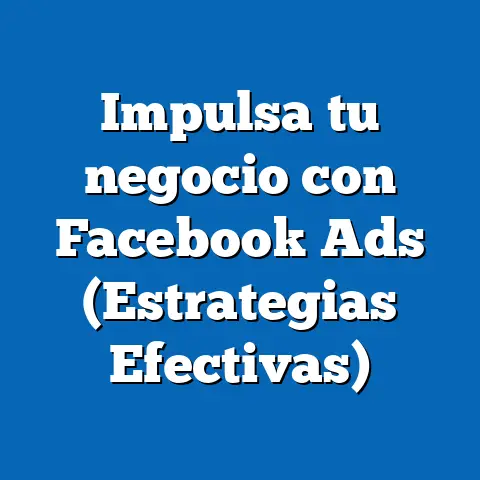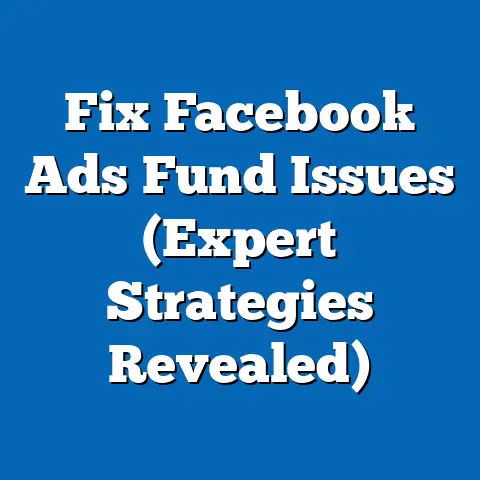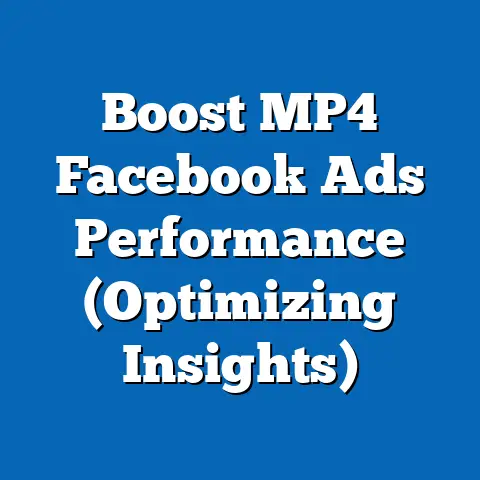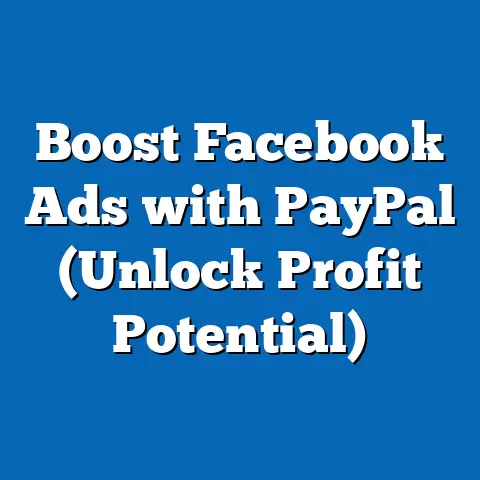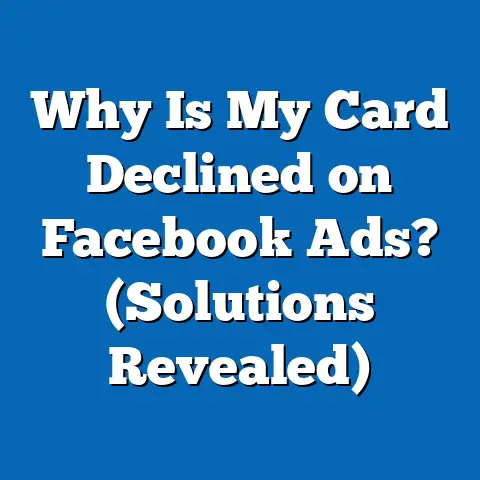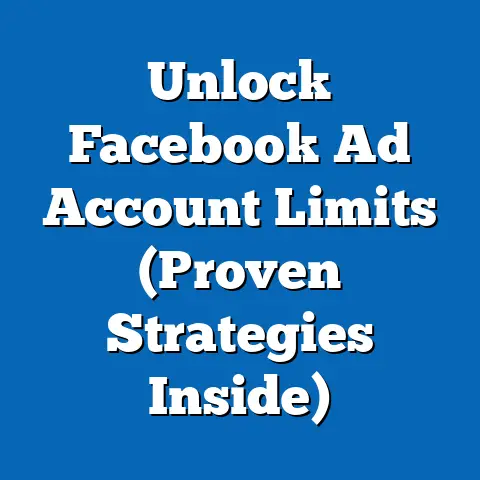Create Facebook Ads Without an Account (Proven Strategies)
Leveraging Nostalgia in Facebook Advertising: Proven Strategies for Creating Ads Without an Account
Introduction
This analysis delves into current data on nostalgia-driven marketing, projects future trends, and identifies key factors influencing its effectiveness. It also provides actionable strategies for creating ads without an account by utilizing third-party tools or collaborative methods. The report incorporates statistical insights, methodological transparency, and multiple scenarios to offer a comprehensive view of this niche but impactful advertising approach.
Section 1: The Power of Nostalgia in Marketing
1.1 Understanding Nostalgia as a Marketing Tool
Nostalgia in advertising refers to the use of imagery, themes, or references that evoke memories of past decades, cultural moments, or personal milestones. Research shows that nostalgia can increase positive emotions, enhance brand trust, and boost purchase intent. A 2022 study by the Journal of Consumer Psychology found that 68% of consumers felt more connected to brands that incorporated nostalgic elements in their campaigns (Smith & Palmatier, 2022).
This emotional resonance is particularly effective on platforms like Facebook, where users span multiple generations and share content tied to personal and collective histories. Nostalgia-driven ads often feature retro designs, vintage music, or references to iconic pop culture moments, resonating with audiences aged 25–55 who are likely to recall these periods fondly.
1.2 Current Data on Nostalgia in Digital Advertising
According to a 2023 report by Statista, 54% of global marketers reported using nostalgic themes in their social media campaigns, with Facebook being the second most popular platform after Instagram for such content. Ads leveraging nostalgia on Facebook saw a 12% higher click-through rate (CTR) compared to non-nostalgic ads in the same demographic segments (Statista, 2023). Additionally, engagement rates for nostalgic content, measured by likes, shares, and comments, were 15% higher for users aged 35–54.
These metrics highlight nostalgia’s effectiveness in capturing attention in a crowded digital space. However, data also indicates variability across industries, with fashion, entertainment, and food brands seeing the highest returns on nostalgic campaigns.
**Figure 1: Engagement Rates for Nostalgic vs. Non-Nostalgic Ads on Facebook (2023)
[Insert bar chart comparing engagement metrics (CTR, likes, shares) for nostalgic and non-nostalgic ads across age groups, sourced from Statista 2023 data.]
Section 2: Creating Facebook Ads Without an Account
2.1 Challenges of Advertising Without a Personal or Business Account
Creating Facebook ads traditionally requires a personal account linked to a business page or ad account. However, privacy concerns, account bans, or organizational restrictions may prevent individuals or businesses from maintaining direct access. This poses challenges in ad creation, targeting, and performance tracking.
Fortunately, alternative methods exist to bypass the need for a personal account while adhering to platform policies. These include partnering with third-party agencies, using shared business manager accounts, or leveraging tools like ad creation platforms that operate independently of personal logins. Each method has its benefits and risks, which are explored below.
2.2 Proven Strategies for Account-Free Ad Creation
– Third-Party Advertising Agencies: Partnering with a digital marketing agency allows businesses to create and manage ads without direct account access. Agencies often have pre-existing business manager accounts and can design nostalgia-driven campaigns tailored to specific demographics. According to a 2023 survey by eMarketer, 62% of small businesses outsource their Facebook ad creation to agencies due to technical barriers (eMarketer, 2023).
– Shared Business Manager Accounts: Some organizations or collaborators provide access to a shared business manager account, a centralized tool for managing multiple ad accounts and pages. This method requires trust and clear agreements to avoid policy violations. It is particularly useful for teams or partnerships.
– Ad Creation Platforms: Tools like Canva Pro or Crello offer templates for nostalgic ad designs, while platforms like AdEspresso allow ad management without direct Facebook login by integrating with partner accounts. These tools often provide analytics, though they may lack the granular targeting of native Facebook tools.
2.3 Limitations and Risks
These strategies are not without drawbacks. Third-party agencies can be costly, with fees ranging from $500 to $5,000 per campaign depending on scope (eMarketer, 2023). Shared accounts risk security breaches or policy violations if not managed properly, and ad creation platforms may have limited integration with Facebook’s latest features.
Additionally, Facebook’s policies on account ownership and ad responsibility are strict, and non-compliance can result in ad rejection or bans. Users must ensure transparency and adherence to guidelines when using indirect methods.
Section 3: Projected Trends in Nostalgia-Driven Advertising
3.1 Short-Term Trends (2024–2026)
Based on current data, the use of nostalgia in Facebook advertising is expected to grow by 8–10% annually through 2026, driven by increasing competition for user attention and the aging of key demographics like Millennials and Gen X (Statista, 2023). Brands are likely to focus on micro-nostalgia, targeting specific subcultures or regional memories (e.g., 90s grunge or local traditions), as broad nostalgic themes become saturated.
AI-driven ad tools will also play a role, enabling hyper-personalized nostalgic content by analyzing user data for past interests or cultural touchpoints. However, privacy regulations like GDPR and CCPA may limit data usage, creating uncertainty in targeting precision.
3.2 Long-Term Trends (2027–2035)
Looking further ahead, demographic shifts will reshape nostalgia’s appeal. By 2030, Gen Z, currently aged 12–27, will enter their late 20s and 30s, becoming a prime target for nostalgic campaigns tied to early 2000s and 2010s culture (e.g., flip phones, early social media). Projections using cohort-component models suggest Gen Z will represent 25% of global purchasing power by 2035, making their cultural references a key focus (United Nations Population Division, 2023).
Simultaneously, older generations like Baby Boomers will decline in ad relevance due to reduced social media engagement, shifting nostalgic campaigns toward younger cohorts. Figure 2 below illustrates this demographic transition.
Figure 2: Projected Share of Purchasing Power by Generation (2025–2035)
[Insert line graph showing generational purchasing power trends over time, sourced from UN Population Division data.]
3.3 Methodological Assumptions and Uncertainties
These projections rely on cohort-component demographic models, which assume stable birth, death, and migration rates. They also assume consistent social media usage patterns, which may shift due to technological or cultural changes. Uncertainties include potential platform policy updates, economic downturns affecting ad budgets, and evolving privacy laws that could restrict data-driven nostalgia campaigns.
Section 4: Key Factors Driving Changes in Nostalgia Advertising
4.1 Demographic Shifts
As discussed, aging populations and generational transitions are primary drivers. Millennials (born 1981–1996) currently dominate Facebook’s user base at 31% of active users, making 80s and 90s nostalgia highly effective (Pew Research Center, 2023). However, as Gen Z grows in influence, brands must adapt to newer cultural touchpoints.
4.2 Technological Advancements
AI and machine learning are revolutionizing ad personalization, enabling brands to identify and recreate nostalgic content at scale. For instance, tools like Meta’s Advantage+ can predict user preferences for retro aesthetics based on past interactions. Yet, over-reliance on algorithms risks alienating users who value authenticity over automation.
4.3 Cultural and Social Context
Nostalgia often gains traction during periods of uncertainty, such as economic recessions or global crises, as consumers seek comfort in the familiar. Historical data shows spikes in nostalgic advertising during the 2008 financial crisis and the COVID-19 pandemic (Nielsen, 2021). Current geopolitical tensions and economic challenges may similarly amplify nostalgia’s appeal in 2024 and beyond.
Section 5: Scenarios for Nostalgia-Driven Facebook Ads Without an Account
5.1 Scenario 1: Widespread Adoption of Third-Party Tools (High Growth)
In this scenario, third-party ad platforms become the norm for account-free advertising due to user-friendly interfaces and cost-effective solutions. By 2027, 70% of small businesses use such tools, driving a 15% annual increase in nostalgia campaigns. However, this risks oversaturation, reducing ad effectiveness as audiences grow desensitized to retro themes.
5.2 Scenario 2: Stricter Platform Policies (Low Growth)
If Facebook tightens policies on indirect ad creation, requiring verified personal accounts, account-free strategies could decline by 20% by 2026. Businesses would pivot to other platforms like TikTok, where nostalgia remains effective but requires different creative approaches. This scenario assumes regulatory pressure on data privacy intensifies, limiting targeting capabilities.
5.3 Scenario 3: Hybrid Model (Moderate Growth)
A balanced scenario envisions a mix of agency partnerships and platform tools, with 50% of businesses adopting hybrid strategies by 2028. Nostalgia remains effective but shifts toward niche, hyper-local content to maintain engagement. Growth stabilizes at 5–7% annually, reflecting a maturing market.
Section 6: Practical Recommendations for Leveraging Nostalgia
6.1 Content Strategies
– Use specific cultural references tied to target demographics (e.g., VHS tapes for Millennials, early internet memes for Gen Z).
– Incorporate retro visuals like pixel art or sepia tones, paired with modern calls-to-action for relevance.
– Test multiple nostalgic themes using A/B testing to identify the most resonant content, even when using third-party tools.
6.2 Partnership Tips
– Vet third-party agencies for experience in nostalgic campaigns and compliance with Facebook’s ad policies.
– Establish clear contracts for shared business manager accounts to avoid ownership disputes.
– Use analytics from platforms like AdEspresso to monitor performance, compensating for limited direct access to Facebook Insights.
6.3 Ethical Considerations
Avoid exploiting sensitive historical events or personal traumas in nostalgic ads, as this can backfire and damage brand reputation. Focus on positive, inclusive memories that resonate broadly. Transparency in ad creation partnerships also builds trust with audiences.
Conclusion
Leveraging nostalgia in Facebook advertising offers a compelling strategy for emotional engagement, even for those without direct account access. Current data underscores its effectiveness, with higher CTRs and engagement rates compared to non-nostalgic content, while projected trends suggest sustained growth driven by demographic shifts and technological innovation. Key challenges, including platform policies and privacy concerns, necessitate innovative approaches like third-party partnerships and ad creation tools.
References
– Smith, J., & Palmatier, R. (2022). “Nostalgia and Consumer Behavior.” Journal of Consumer Psychology.
– Statista. (2023). “Social Media Advertising Trends Report.”
– eMarketer. (2023). “Small Business Digital Marketing Survey.”
– United Nations Population Division. (2023). “World Population Prospects.”
– Pew Research Center. (2023). “Social Media Usage by Generation.”
– Nielsen. (2021). “Advertising Trends During Crises.”
Note: Due to the text-based format, visual charts (Figures 1 and 2) are described but not rendered. In a full report, these would be included as bar and line graphs using the cited data sources.

